Wood Processing Dust Extraction Systems
Wood Processing Industry Dust Extraction Systems
Comprehensive Dust Control for Australian Wood Processing
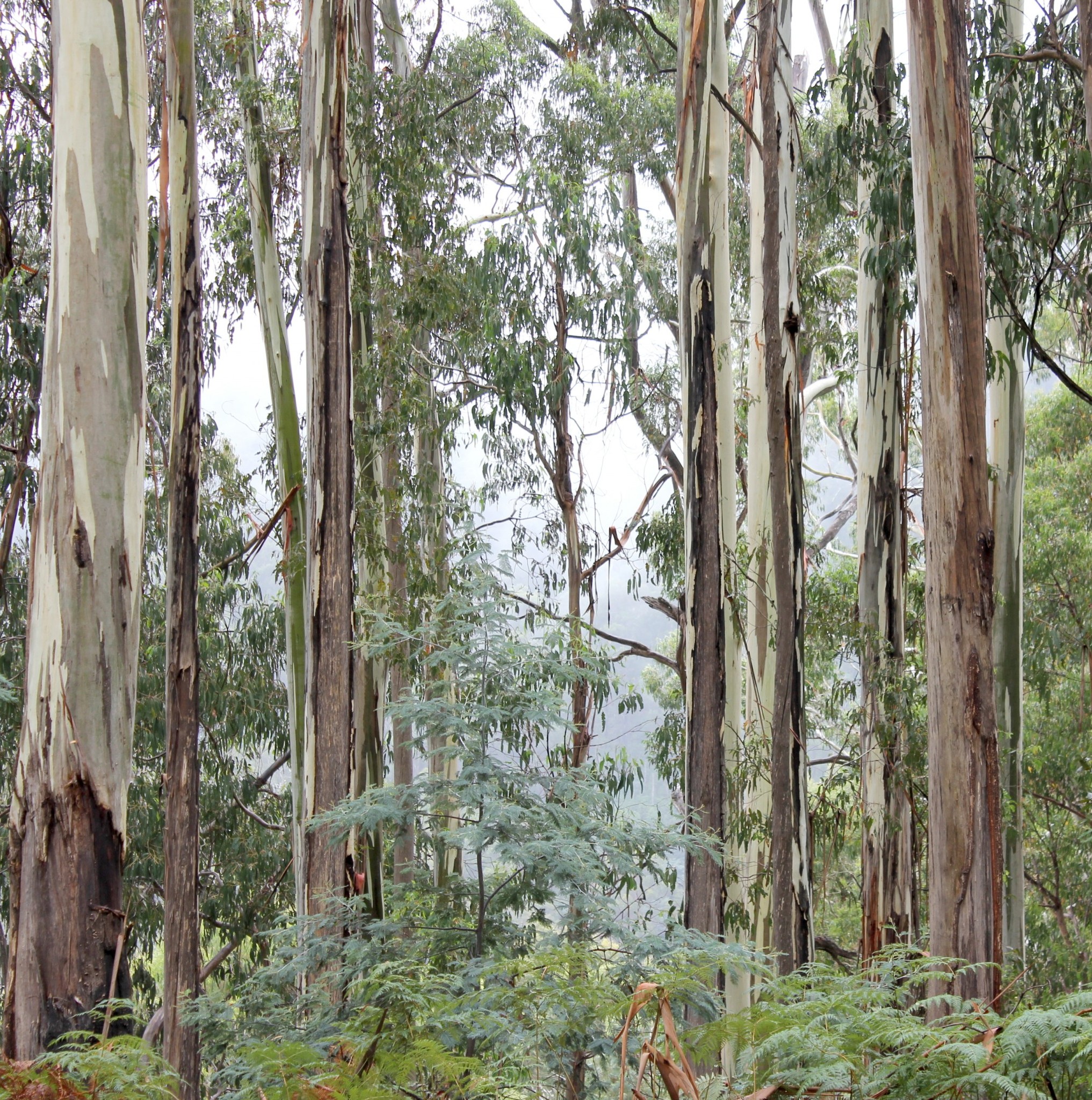
Forests of Eucalyptus and other tree species are the backbone of the Australian Wood Processing Industry

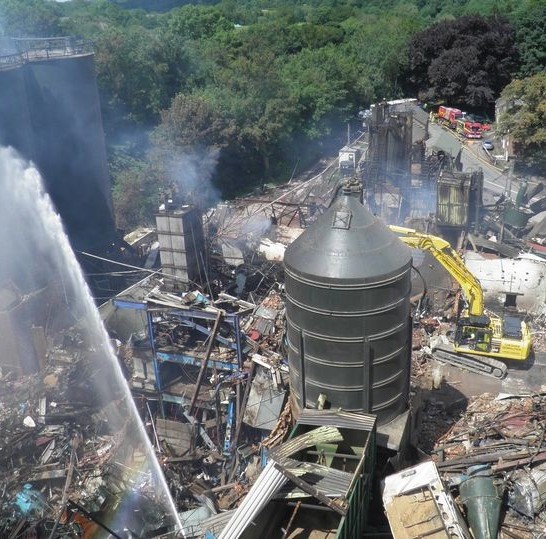
Devastaing consequences of poor dust management : UK 2015 wooden floor manufacturing production site after an explosion: the company ignored inspection reports citing improvements were required in their management of dust.
A Diverse Industry!
Australia's wood processing industry is diverse, with enormous operations working in the many forestry areas, down to small joinery shops, with a range of sawmills in between. A wide number of wood products are a result of this industry: poles and pilings, sawn wood for construction, veneers, particle board, pulp and paper.
Why is Dust Control so Critical?
Dust Control has become an increasingly critical element in this massive industry, continually evolving as attention to worker health and operation safety is forcing many companies to check their existing work practices. Procedures not questioned 30 years ago are no longer compliant. Companies are aware of these stricter regulatory requirements, and, productivity and end quality have long been associated with better dust control.
EBCAM Expertise :
EBCAM have experience across many of these wood processing applications, backed by our North European suppliers with global experience of this area, especially Northern Hemisphere forestry, which can be transferred to Australian conditions and wood types even if the plant species are specific to Australia: eucalyptus as compared to pine and spruce.
Wood Processing Dust Extraction Requirements
Ultimately, ALL wood dust is a health hazard.
Certain wood dusts cause severe immediate reactions affecting eyes and skin eg. Teak, but any wood dust is classified as a Group 1 carcinogen by the International Agency for Research on Cancer.
Wood dust exposure is highest for woodworking machine operators, carpenters, cabinet makers and employed in manufacture of wood products. Prolonged exposure and inhalation of this dust may cause cancer of the nasal cavity, sinuses and nasopharynx, as well as leukaemia.
Australian Regulatory Requirements
The current AOES (Australian Occupational Exposure Standard) for hardwood and softwood are different: 1mg/cu m compared to 5mg. Whilst Safe Work Australia set the exposure standards as 1/mg/cu m for certain hardwoods(beech/oak), 5mg/cu m for softwood, relating to 8H time weighted average(TWA), there are also specific short term exposure limits(STELs) for softwoods: 10mg/ cu m over 15mins.
Composite materials such as MDF containing formaldehyde also carries health risks: initial respiratory irritation and longer term health effects of wood dust exposure.
Individual States are responsible for governing their own WHS regulations. Basically everything possible must be done to reduce the exposure to wood dust. WHD Regulation 50 states that air monitoring must be conducted if there is a possible risk to health, or there is potential of exceeding accepted exposure limits. These should be carried out by a competent qualified occupational hygienist. Other preventitive workplace practices eg LEV must be put in place as well as simply air monitoring.
Besides employer liability, if dust produced in wood processing is not controlled, there are insurance considerations for the company, if an investigation ever proves they did not meet their obligations in staying compliant.
Combustible Dust Explosion Risks
A second critical issue, however, is always the risk of explosions when handling wood dust.
For any dust explosion to occur there must be:
- explosive dust must be evenly suspended in the confined volume of air
- there must be an oxidizer, such as oxygen in the air
- there must be an ignition source.
AS/NZS 4745:2004 Outlines measures and practices to assist industries dealing with combustible dust. It also assists in minimizing risks of injury, death or loss of property to fire and/or explosion via promoting good design, management/practices in manufacturing and processing plants.
Combustible Dust Explosion risks
10 years ago, in the UK, a wooden flooring company in Cheshire experienced an explosion. The nature of their production, made it a dusty business, but on that Friday morning, an explosion totally destroyed the factory and left 35 staff in hospital. Three 'missing' employess were found in the rubble days later as the clean up progressed: a 38 year old staff member was never found, due to the 1000+degC temperatures reached in the explosion, and resulting fire.
Dust extraction systems with some level of explosion protection is critically important in any dust handling industry. All dust extraction systems are handling potentially explosive dust: the risk is recorded on a scale with Aluminium dust at the top - 4x as explosive as wood dust. For an extraction system to operate effectively, it needs to be a solution designed by an experienced technician who fully understands dust behaviour, required duct flow rates and, the relationship between fan size and filter area.
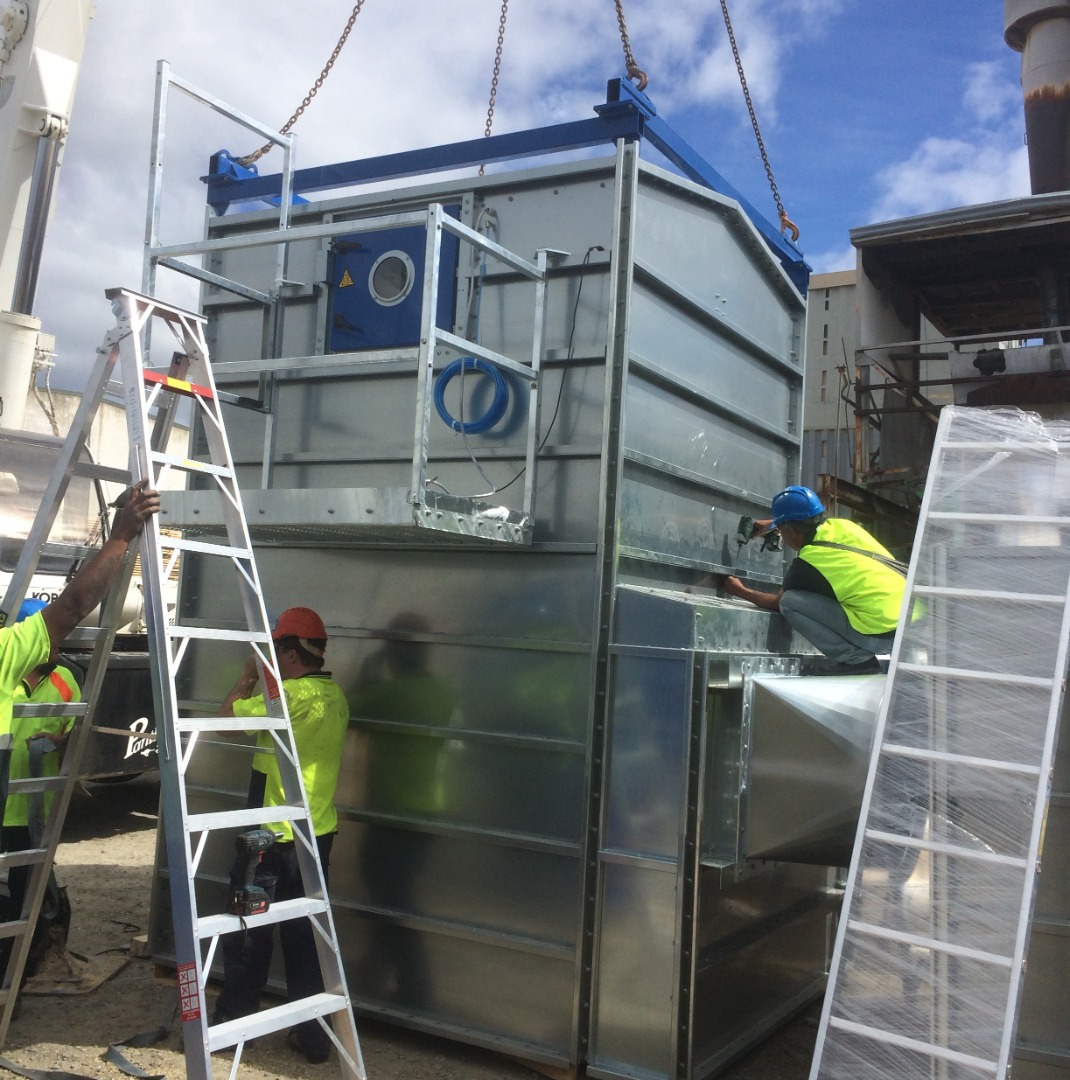
Jet Filter Installation - easy to transport: fast installation
EBCAMs unique energy saving feature: save production costs!
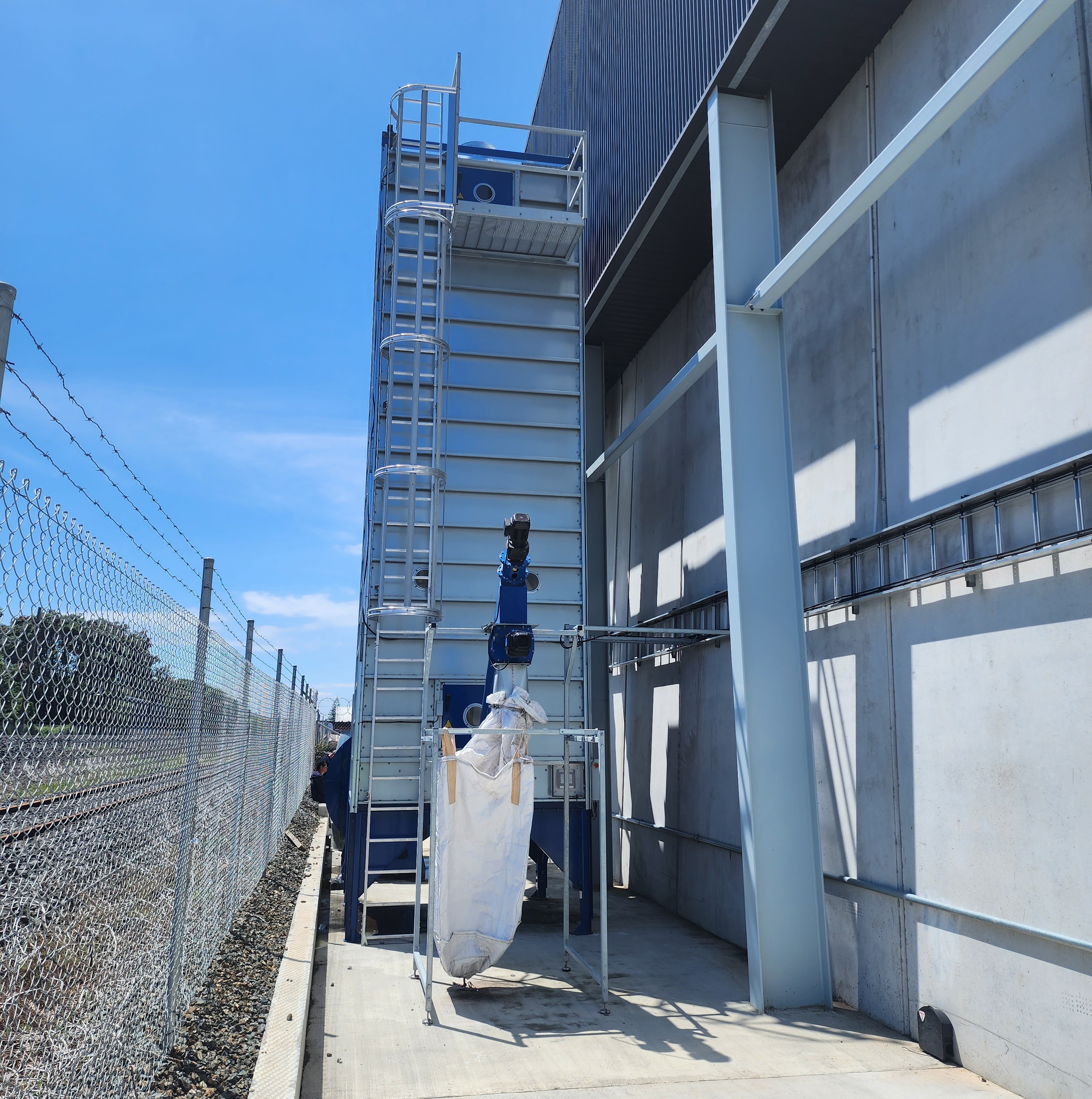
EBCAM JET FILTER - big capacity but only 2.4 metre square footpront required - ideal when space is resticted.
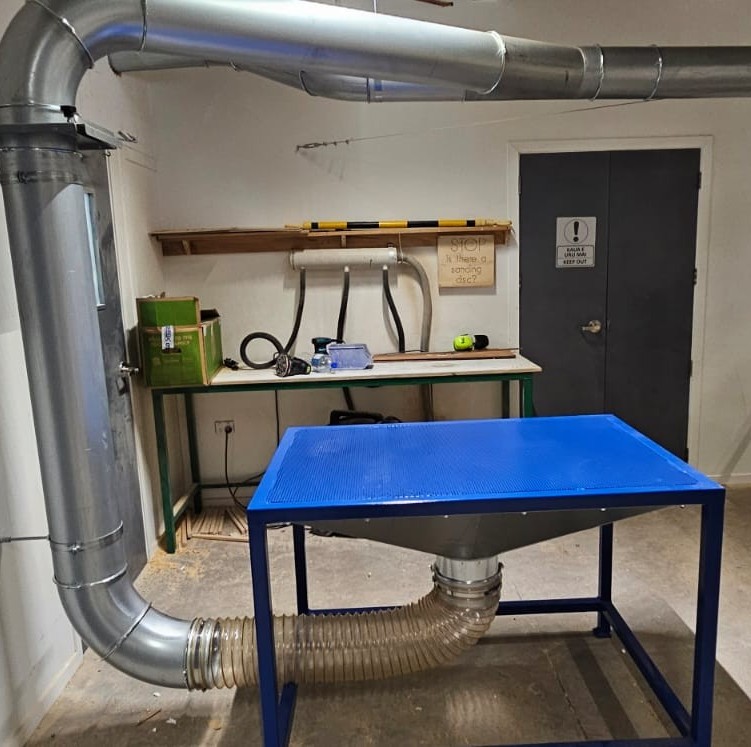
DownDraft tables - ideal for small sanding operations
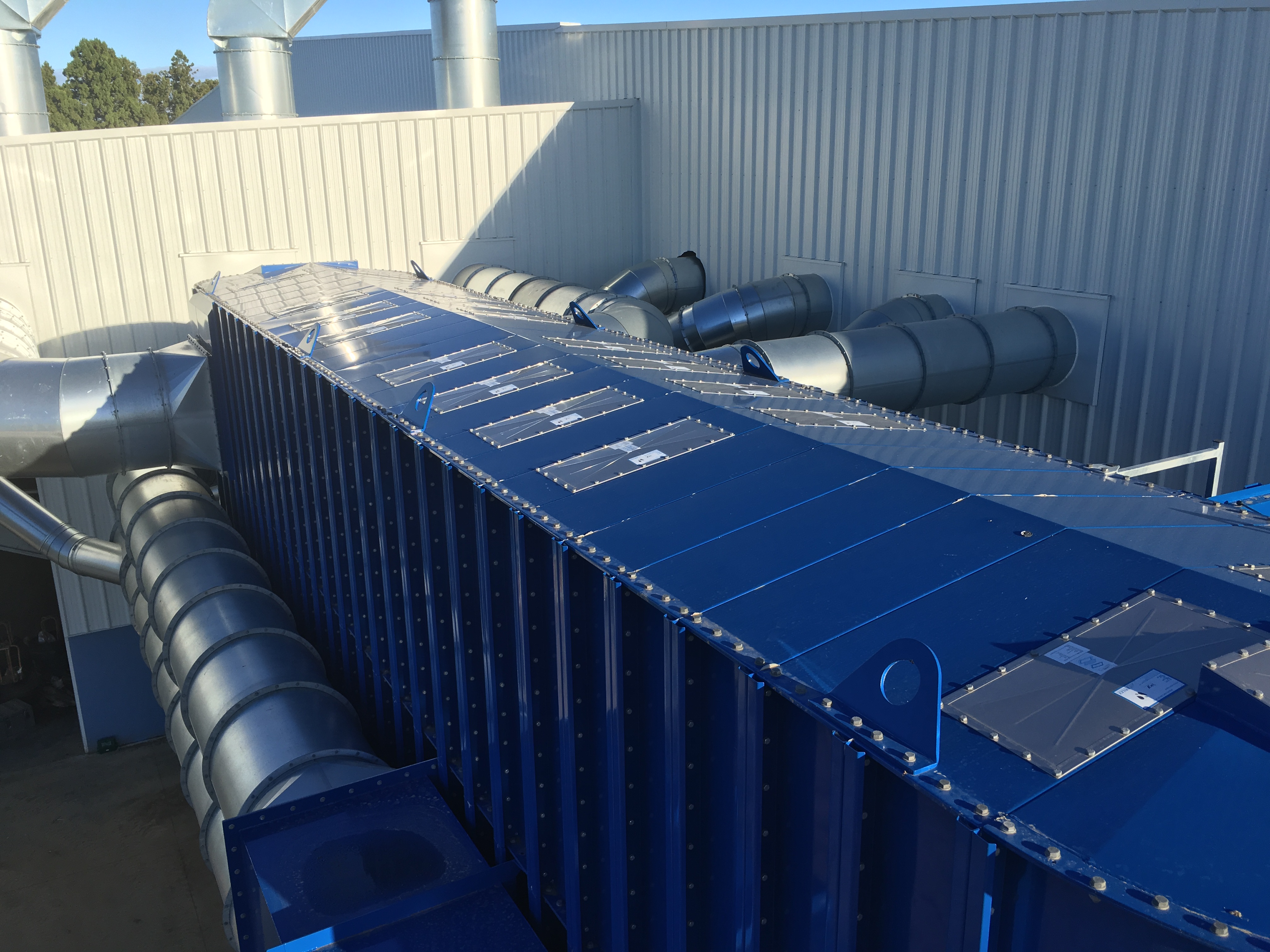
Super Blower dust filters with capacity for up to 380,000cu m /h - includes EBCAMS unique VFV - Vertical Flameless Venting
Wood Processing Dust Extraction Challenges
Hi-Volume Dust Generation
The hi-speed machinery now available for the wood processsing industry has outpaced the capability of many old style wood dust extraction filter systems. To deal with the increased volumes of air being extracted, old syle filter units with the required filter area to be effective, would end up being too large to fit on a site. New filter designs from major European manufacturers have addressed this issue successfully to provide excellent performance in a smaller footprint ie filters that are properly sized but can handle large air volumes due to new engineered design.
Facility Infrastructure Limitations
Ideally dust extractors are always placed outside a manufacturing plant to help deal with the noise of the fan, and also to ensure the dust extraction installation is totally compliant in terms of explosion risk. A single large properly sized dust collector is the most effective option compared to several small trolley type dust machines located inside. These leak dust and quickly lose efficiency and are actually banned in Europe where compliance is taken more seriously. An undersized dust collector will quickly block up, and companies may be persuaded that they will have to buy new bags - this will improve things short term but is in fact a costly remedy for a filter that was wrongly sized originally.
As well as designing and specifying dust extraction solutions for new projects, EBCAM have worked in many sites to improve dust extraction in existing installations to improve airflows in poorly planned duct runs, (using for example branches at 90deg), and where the original design showed no understanding of the effect of duct diameter/dust loads and flows. Using our own full time permenant installation staff means that work carried out on your site will be done as efficiently as possible avoiding unnecessary disruption to your productivity. Unfortunately, in many instances the main filter/fan may need to be switched off but we try to work around lunch breaks and end of day shutdown when possible.
Rising Energy Costs
Any company is interested in reducing operational costs. Energy costs have increased sgnificantly over the last decade as a result of increases in the wholesale energy costs, network charges and government policy also driving up these. Purchase of new plant and equipment shouldn't be signed off without asking the supplier about ongoing running and maintenance costs.
A considerable waste of energy occurs in older style dust collectors stuck with 1970's technology in the use of compressed air. Many filters available today on the Australain market - often boasting 'Australain made' use a fixed pressure to clean theri dust bags/filter socks. This is often set at 5 bar.
EBCAM can provide a range of filters with VARIpulse™ cleaning which allows cleaning to occur when VARIpulse™ sensors detect that the filter bags need pulsing, instead of a fixed every 30 seconds or so, (the system found on most other older type dust filters).
- Less energy is required to clean the bags and VARIpulse™ saves between 50-90% of compressed air consumption – less load on your compressor!
- Whilst cleaning individual bags, the VARIpulse™ sensors also measure the air flow through the socks and adjusts the pulse forces between 1.5bar and 5bar making further savings.
Wood Processing Dust Extraction Systems and Equipment
Ebcam can supply a range of dust extraction solutions for sawmills and other large wood/timber processing operations.
JET filters for Medium to High volume capacity, with a uniquely small foot print, 2.4 x 2.4m. JET filters include the latest European Energy and Safety technology with VFV™ (Vertical Flameless Venting) and VARIpulse™ cleaning. These have been installed in many wood processing plants in Australasia.
Due to their contruction and dimensions, JET FILTERS are very quick to install, and perfect for large scale sawmills where air volumes 13,000 to 67,000m3/h are being handled. Transport costs are also reduced due to the multiple panel construction using heavy duty plate.
SUPERBLOWER wood processing filters also give your plant the most energy efficient pulse filters in the world, and ensure your workplace and staff can carry out duties with the world’s safest filters. No company or other supplier can match our technological and environmental lead in this area. SUPERBLOWER filters operate at air volumes up to 280,000m3/h.
Other useful products for wood processing
EBCAM provide, (mostly from stock in our Melbourne warehouse), the biggest range of products to complement the dust collector used in a wood processing plant whether large scale of simply a classroom in a college Technology Department.
DownDraft Tables are ideal for hand sanding small items in education or small joineries.
LIPLOCK modular ducting, manufactured using swedish steel galvanised at source, saves money as it can be reconfigured or re-used as many times as necessary, and is much quicker to connect than cheaper leaky spitral duct. Our galv. range is a solid 0.9mm.
Other components such as Material Handling and Clean Air fans are available (popular sizes ex stock) as well as Rotary Valves. Spare filter sock bags are available but because EBCAM correctly specify our dust collectors, and allow for furure proofing, (if more machines are added or the production volumes increase), we never sell them - most of our dust collectors are still using the same filter socks 10 years after commissioning, unlike many other systems on the market where you are advised to change the socks at least yearly to avoid blockages!
Dust Explosion Control Valves are offered on sites where particular attention is paid to safety: the explosion duct valve prevents an explosion in the plant being channelled back to the production premises and machines - and workers.
EBCAM are Unique providers to the Wood Processing Industry
The scale of operation determines airflow required so Contact Us to discuss the most efficient dust collecting plan to match how you are currently operating, as well as ensuring your dust extraction solution can easily be adapted if you expand in the future. Dust extraction solutions require experience and knowledge of dust behaviour - let us help your workplace, using the latest European technology available in dust extraction. We are backed by enormous scale supplier companies who distribute globally: we use their knowledge and experience of 1000's of installations all over the world. No other company in the Australian market can match our breadth of product range, quality and energy saving features with the only flameless venting for safety.
